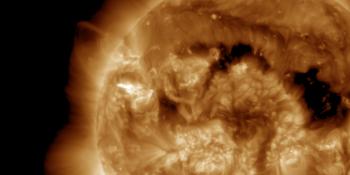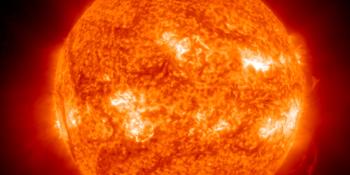M-class solar flares and active aurora
Tuesday, 14 October 2014 21:26 UTC

The Sun is full of surprises. Just when you least expect it she produces two M-class solar flares: M1.1 at 18:37 UTC and a very long duration M2.2 solar flare that peaked around at 21:26 UTC.
The source of these solar flares is located behind the east limb and as a result, these solar flares might have been stronger than the M1 and M2-classes as recored by GOES-15. There are two familiar sunspot regions about to return and one of them is likely the source of these solar flares: old sunspot region 2173 or 2172. A coronal mass ejection was likely launched but it will of course be directed away from Earth.
NOAA SWPC alerts
SUMMARY: 10cm Radio Burst Begin Time: 2014 Oct 14 1840 UTC Maximum Time: 2014 Oct 14 1847 UTC End Time: 2014 Oct 14 1858 UTC Duration: 18 minutes Peak Flux: 1300 sfu Latest Penticton Noon Flux: 113 sfu
SUMMARY: 10cm Radio Burst Begin Time: 2014 Oct 14 2026 UTC Maximum Time: 2014 Oct 14 2037 UTC End Time: 2014 Oct 14 2056 UTC Duration: 30 minutes Peak Flux: 180 sfu Latest Penticton Noon Flux: 120 sfu
Image: NASA SDO.
Geomagnetic conditions
Geomagnetic conditions are currently active (Kp4) according to the Wing-Kp index following favourable solar wind and IMF conditions likely related to a coronal hole high speed stream. Be sure to read our previous news item for more information. Conditions remain favourable for active (Kp4) geomagnetic conditions with a chance for minor G1 geomagnetic storming conditions in the hours ahead so also sky watchers in the northern parts of the United States should be alert for aurora. The NOAA SWPC has confirmed that G1 geomagnetic condtions have been reached with the observed Wing-Kp index being slightly below that value.
In Europe, aurora displays have been observed and are still possible to be seen from Scotland, Norway, large parts of Sweden, Finland and even Estonia. The images below were taken just a few hours ago by SpaceWeatherLive teammember Marcel from Luleå, Sweden.
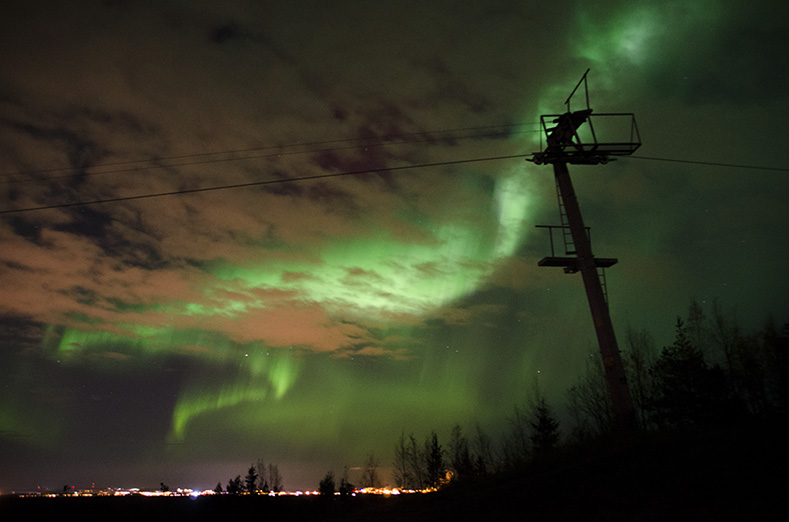
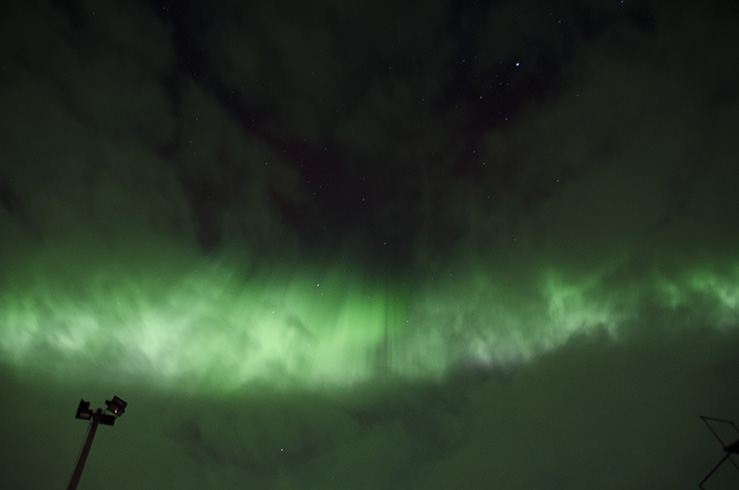
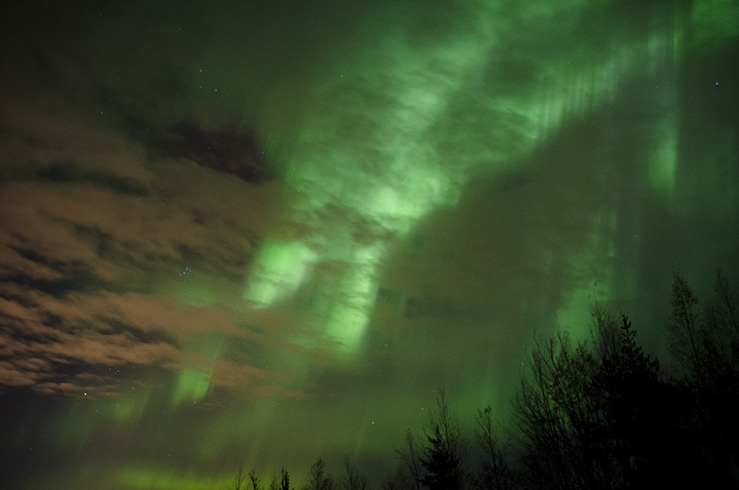
Share your pictures with us!
Do you have pictures that you want to share with us? Please send them to photos[at]spaceweatherlive.com along with your name/website or Facebook page/time+location and we will place them on the site as well!
Thank you for reading this article! Did you have any trouble with the technical terms used in this article? Our help section is the place to be where you can find in-depth articles, a FAQ and a list with common abbreviations. Still puzzled? Just post on our forum where we will help you the best we can!
Latest news
Latest forum messages
Support SpaceWeatherLive.com!
A lot of people come to SpaceWeatherLive to follow the Sun's activity or if there is aurora to be seen, but with more traffic comes higher server costs. Consider a donation if you enjoy SpaceWeatherLive so we can keep the website online!

Space weather facts
| Last X-flare | 2025/01/04 | X1.85 |
| Last M-flare | 2025/01/09 | M1.1 |
| Last geomagnetic storm | 2025/01/04 | Kp5 (G1) |
| Spotless days | |
|---|---|
| Last spotless day | 2022/06/08 |
| Monthly mean Sunspot Number | |
|---|---|
| December 2024 | 154.5 +2 |
| January 2025 | 140.8 -13.8 |
| Last 30 days | 151.7 +34.3 |
